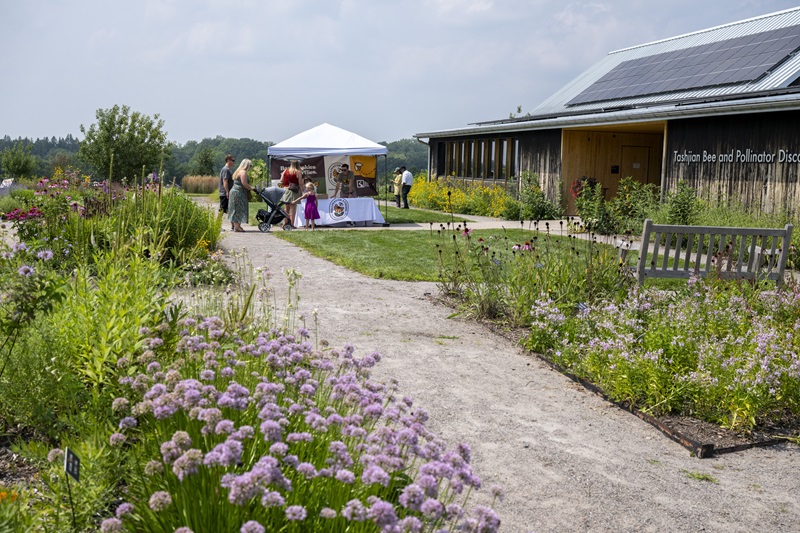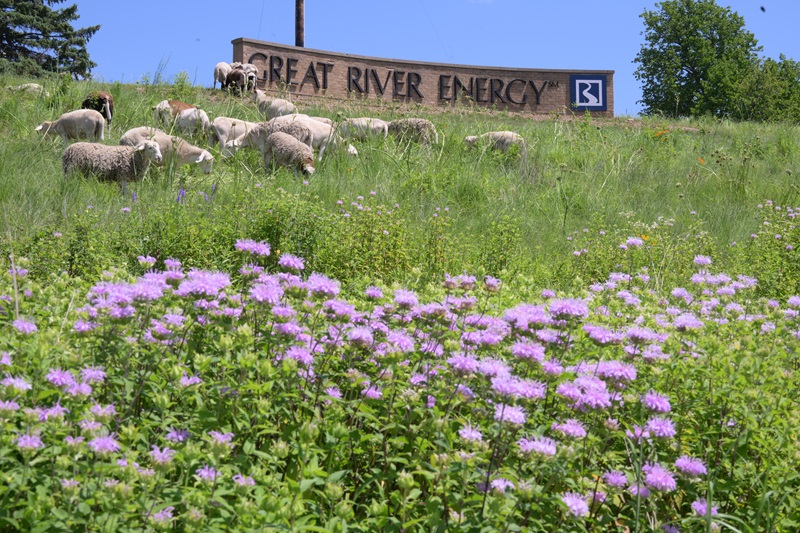Minnesota grocers have long relied on trucking in salad greens and tomatoes from farms thousands of miles away for at least a portion of the year. This amount of travel compromises produce quality and freshness, raises prices and creates more carbon emissions.
But with advanced indoor farming technology, produce can be grown closer to home throughout all seasons – and Minnesota’s electric cooperatives are playing an increasingly large role in this trend.
“Food production in Minnesota is transitioning in an interesting way. We’re seeing more indoor farming operations move into the planning stages,” said Erin Sparks, economic developer with Great River Energy.
Nobles Cooperative Energy Communications Specialist Tracey Haberman stands near fast-producing lettuce varieties in the co-op’s new GroShed. (Alyssa Sobotka/The Globe)
Indoor farming, with sophisticated climate control systems, can produce food much more efficiently with higher yields. Some operations use vertical or container systems, both of which require a significant amount of artificial lighting but maximize water consumption efficiency. And with utilities like Great River Energy continuing to incorporate more carbon-free sources of energy into their power supply portfolios, the electricity used to grow produce indoors is becoming greener by the day.
Great River Energy has taken a proactive approach in learning more about this innovation in fresh food production and strategizing about facilitating its growth in Minnesota. The co-op’s economic development team has attended conferences on the topic, and worked with Bushel Boy in Owatonna, Minnesota – one of the early pioneers in this technology with its vine-ripened tomatoes.
In collaboration with Todd-Wadena Electric Cooperative (TWEC), one of its 28 member-owner cooperatives, Great River Energy recently installed an indoor ag container farm project as part of a two-year research and development project with the Electric Power Research Institute. This ‘Sota Grown container will soon sprout kale, be harvested and then donated to families in TWEC’s service territory.
Great River Energy also worked with member-owner Nobles Cooperative Electric to help fund its hydroponic GroShed, an 8-by-12-foot shed equipped to grow lettuce, tomatoes, cucumbers and peppers that is now up and growing. The produce will be donated to area food shelves as well. Runestone Electric Association, another member-owner, will also soon receive its own GroShed.
This type of high-tech agriculture can extend beyond standard greenhouses, too. With the same technology used in the ‘Sota Grown and GroShed container farms duplicated into larger spaces, the U.S. Department of Agriculture sees indoor agriculture technology as having potential to address food security since the world’s growing population expected to exceed 9 billion by 2050.
“These growing methods could be used in a 120,000-square-foot warehouse or a 4 acre-sized warehouse,” said Jill Eide, commercial, industrial and agricultural strategist at Great River Energy. “What we learn here about from a distribution and power supply perspective should provide valuable insight.”
 " data-object-fit="cover">
" data-object-fit="cover">
 " data-object-fit="cover">
" data-object-fit="cover">